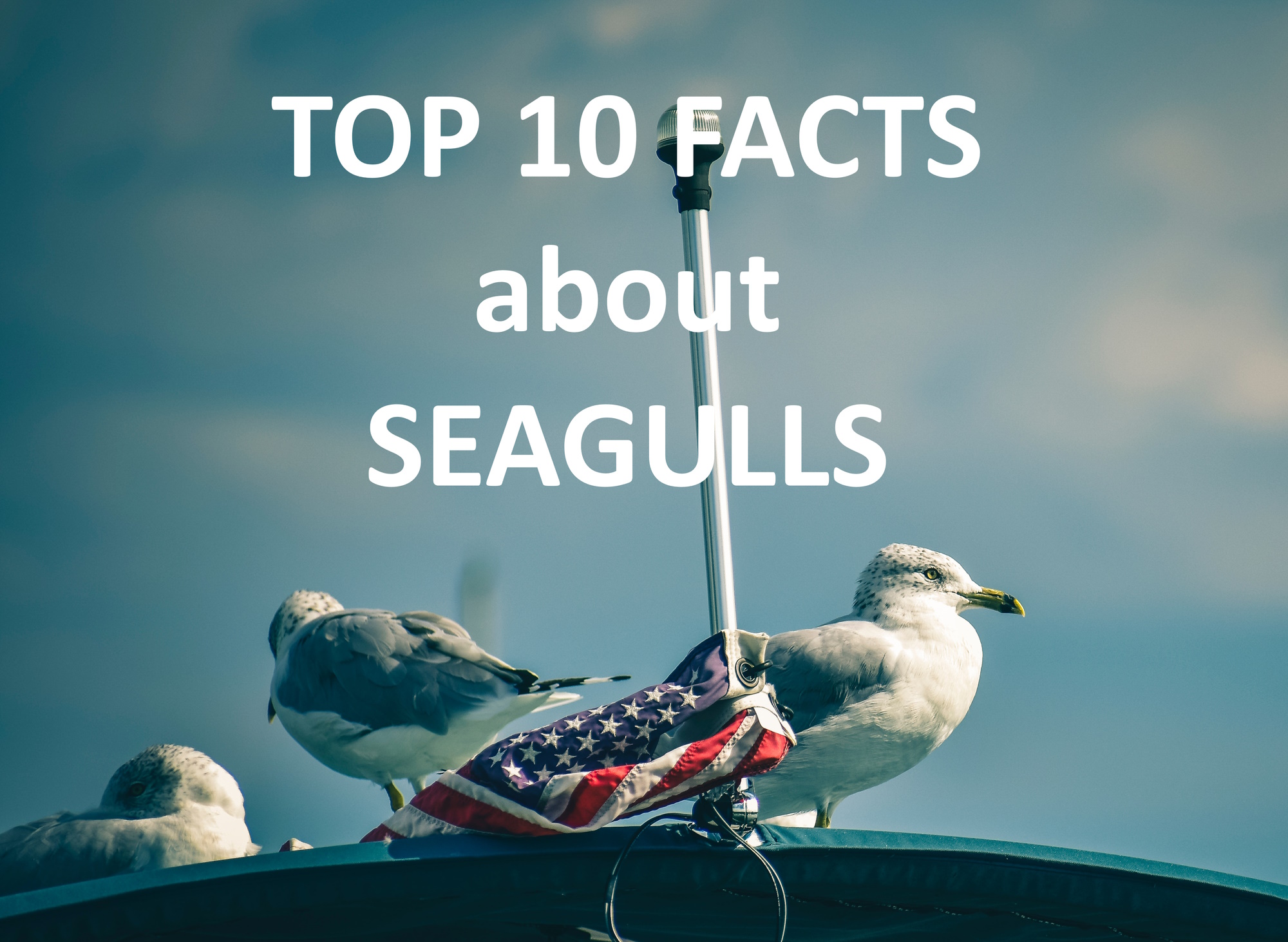By MSc Gvapo Tripinovic and Adam Tripinovic
Hello everyone, my eight-year-old son Adam and I made a new educational article and YouTube video. This time about seagulls.
Thank you for being with us again. In this 5-minute read, we uncover the most fascinating details about Seagulls.
Gulls are a type of bird belonging to the family Laridae, which includes around 40 species worldwide.
The most famous representatives are SEAGULLS.
They are known for their distinctive white or gray plumage, black wingtips, and webbed feet.
They are found worldwide, primarily near coastal areas but also on inland lakes and rivers.

Their size varies from 11.4 inches or 29 centimeters to an impressive 30 inches or close to 80 centimeters.
The male and female seagulls pair for life. They take turns incubating the eggs, feeding the chicks, and protecting them.
Seagulls return to the same breeding site year after year.
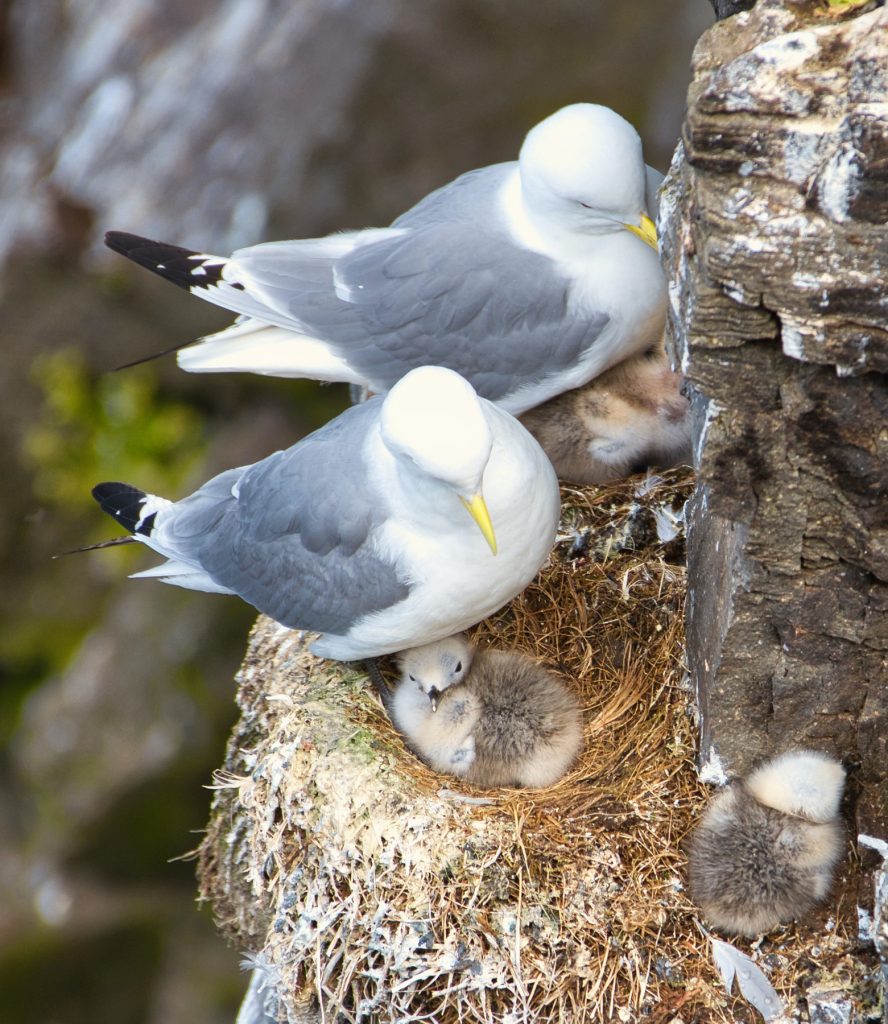
Seagulls are opportunistic feeders, and they eat a wide variety of food, including fish, crustaceans, shellfish, worms, insects, rodents, other smaller animals, and seeds But they will not be shy to steal and scavenge for food from the garbage either.
Some species, such as the Western Gull, can dive into the water to catch prey.
Seagulls have several adaptations that allow them to feed on all these different types of food.

A strong beak can crack open shellfish, webbed feet that help them forage for food in the water, and sharp talons that allow them to catch and hold onto fish.
They also have keen eyesight that helps them spot food from a distance.
Seagulls can drink both fresh and salt water.
They have a unique pair of glands above their eyes that can flush the salt from their organism.
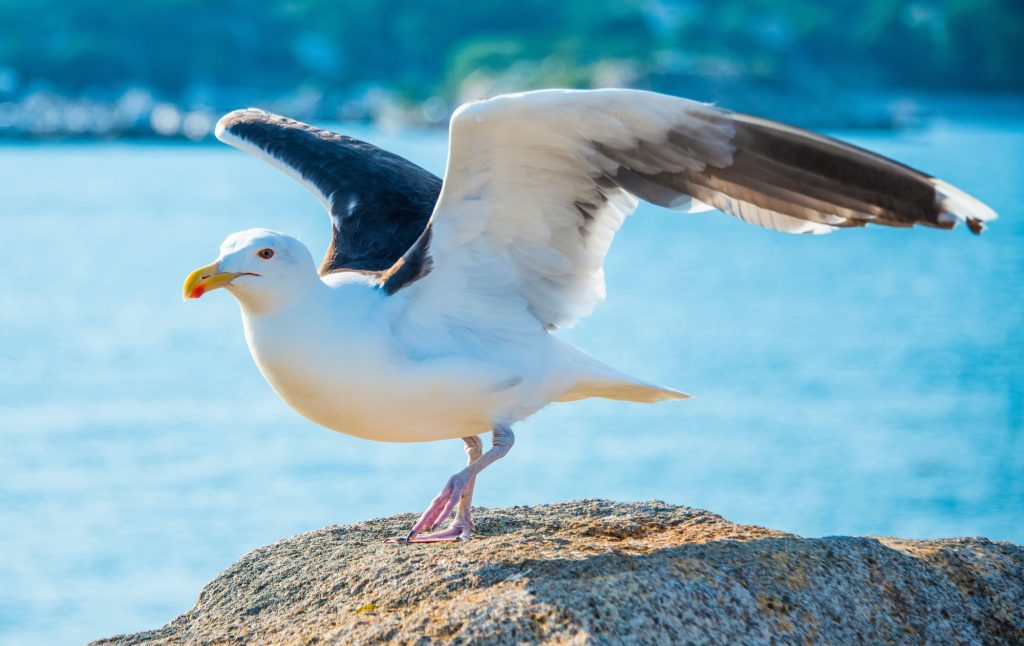
Seagulls live and breed in large colonies.
The largest colonies are usually on the coast of the Arctic Ocean, the Great Lakes, and the California coast.
Most numerous representatives are:
• The Western Gull inhabits the Pacific coastline of North America and is distinguished by its black and white plumage.
• The Laughing Gull is located along the Atlantic coast of North America and is recognized during the breeding season by its black head and red bill.
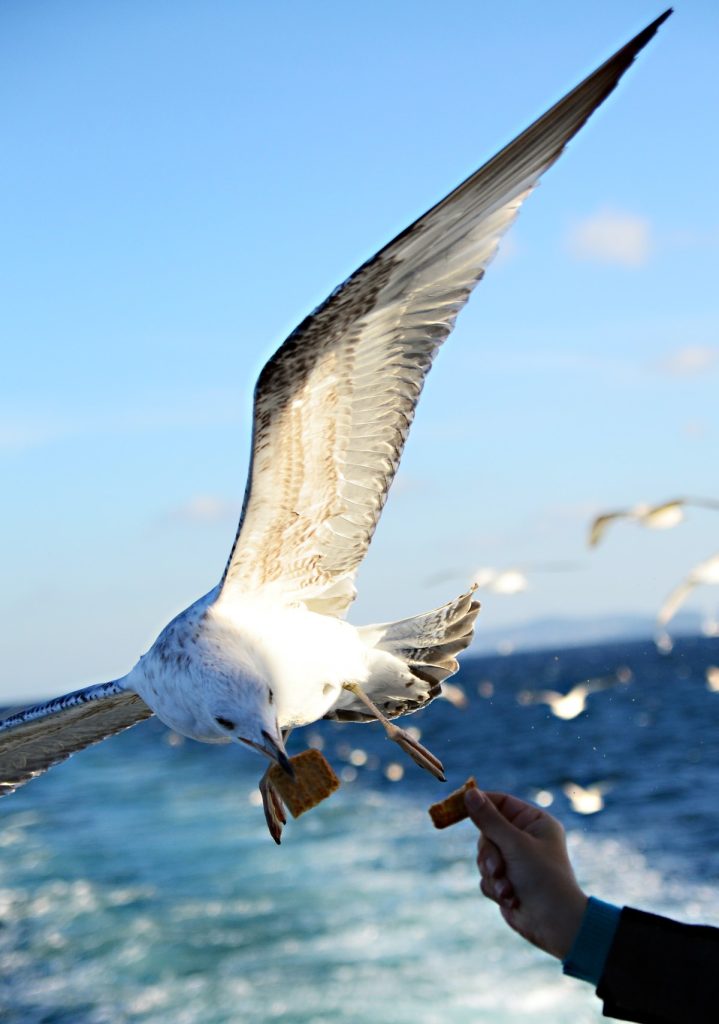
• The Black-headed Gull is prevalent in Europe and Asia and is distinguished by its black head during the mating season.
• The Kelp Gull may be found along South American, African, and Australian coastlines and is distinguished by its yellow bill.
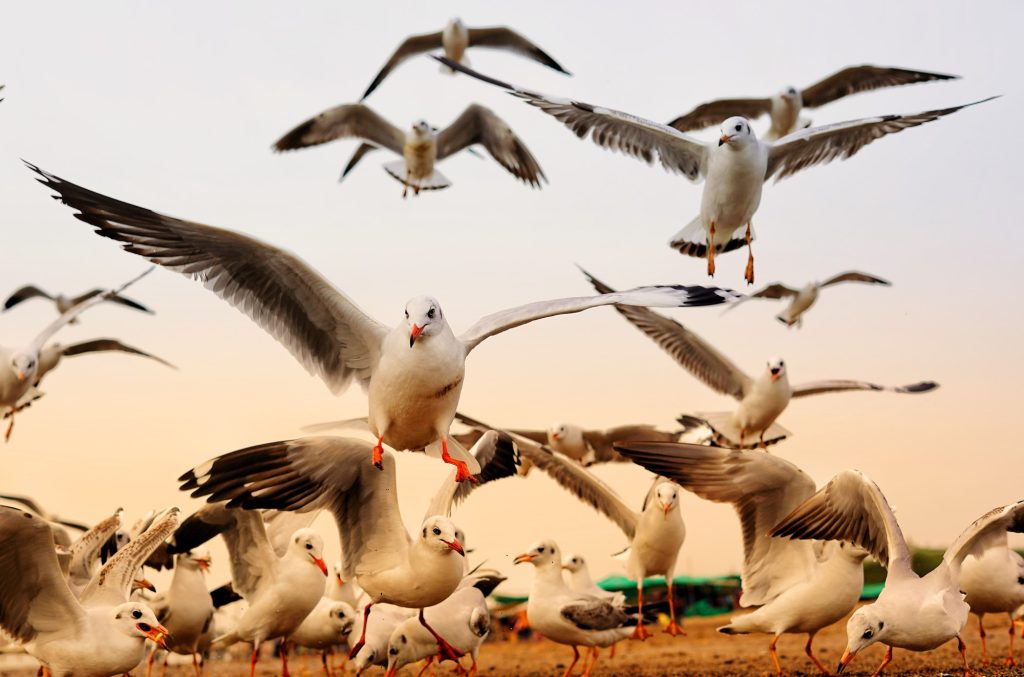
Seagulls are notorious for their loud, piercing calls, which they use to communicate with one another.
These calls are used for many things, like finding a mate, warning of danger, letting others know where food is, and establishing and guarding their territory.
In addition to their calls, seagulls also use body posture and wing displays to communicate with each other. With vocal calls, these cues are often used to provide more information.
Plunge-diving
The Western Gull lives along the Pacific coast of North America. Their famous ability is plunge-diving.
They often catch fish and other small water animals by diving into the water from heights of up to 100 feet (30 meters).
Seagulls catch fish and other prey with their sharp beaks and talons.
Their webbed feet help them swim and move around underwater.
Plunge-diving is an essential behavior for seagulls living in coastal areas, as it allows them to access a wider variety of food than they could catch by surface-feeding alone.
However, not all seagulls can plunge-diving.
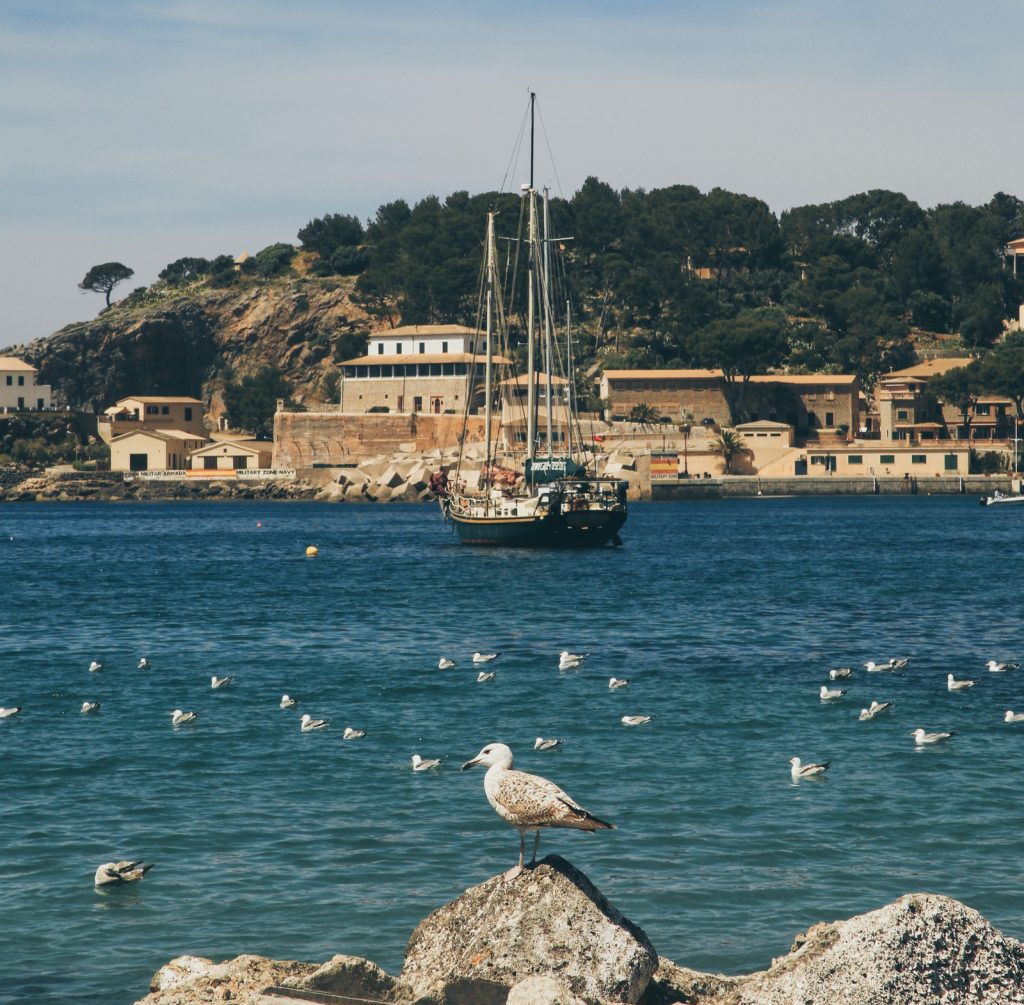
Seagulls are social birds.
They form colonies that number from a few to a few thousand birds.
The largest colony of Black-legged Kittiwakes is found on the cliffs of the Gulf of Alaska, where they nest on rocky ledges and cliffs. The colony is estimated to have over 3 million birds, which makes it one of the largest seabird colonies in the world.
The largest colony of Western Gulls is located on the Channel Islands of California.
The colony is estimated to have over 300,000 birds.
Seagulls are strong and speedy fliers.
Arctic Gulls can fly at speeds of up to 70 miles or 112 kilometers per hour.
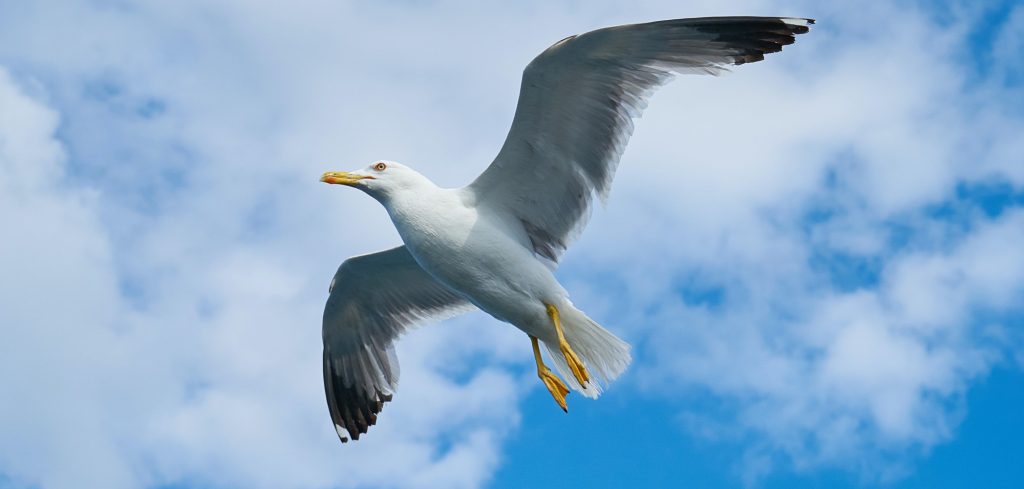
Seagulls are considered to be one of the most intelligent animals.
They pick up shells and snails and then drop them from a height on hard surfaces to break them open to get to the food inside.
This “tool-use” behavior is rare among animals and is an example of high cognitive problem-solving abilities.
Seagulls learn, remember and pass on behaviors to their offspring.
For example, they can organize groups and start stumping with their feet to imitate rainfall.
This will trick earthworms into coming to the surface. Young seagulls will learn this and then pass it on to their chicks.
Very smart indeed.
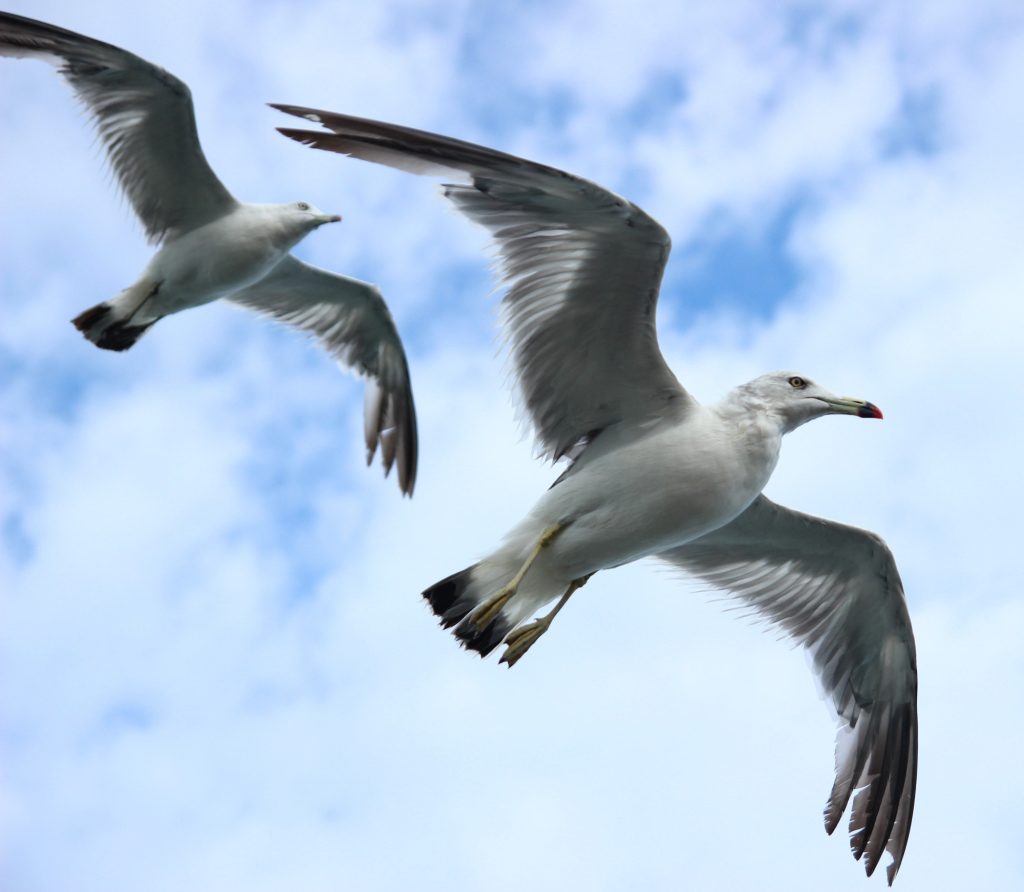
Seagulls have long, pointed wings that allow them to fly at high speeds and change direction quickly.
They also have large, powerful breast muscle that provides the power they need to fly into headwinds and against strong currents. Additionally, seagulls have a unique skeletal structure that allows them to lock their wings in place when flying into strong winds, which helps them maintain control and stability.
Seagulls have a lifespan of around 20 years in the wild.
Conclusions:
Combining high intelligence, strong physical construction, ability to fly under conditions where other birds would hardly stand a chance, plunge-diving, feeding on any available food source, and group social structure give seagulls a vast advantage over the many other bird species.
Some other species can do similar things, but their combination gives seagulls a unique advantage to survive and prosper in so many different environments.
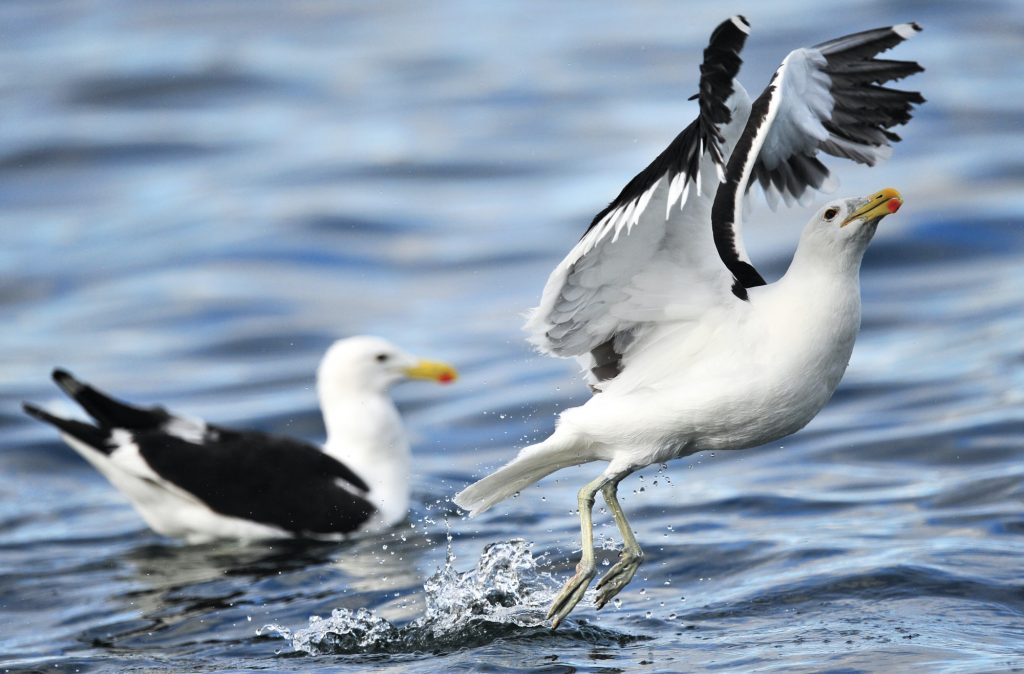
Thanks for tuning in! We hope you enjoyed learning more about seagulls today, and thank you for visiting our website ParentingDad.
You can find more great articles and videos about animals here:
Alpacas, Ants Rescue Their Injured Friends, Butterflies, Cheetahs, Dolphins, Do Fish Sleep, Dogs – Which dog breeds are the smartest, Elephants, Great White Sharks, Sharks in aquariums, Snakes, Hummingbirds, Jellyfish, Lions, Pigeons, Red Pandas, Owls, Seagulls, Snails, Squirrels, and Wolves.
If you found this ant rescue story fascinating, be kind and share it with your friends.
And remember to return to our blog ParentingDad.com for more incredible insights into the fascinating world of nature.
Until next time, keep exploring and appreciating the wonders of our planet!
Adam and I wish you a great day. Stay well, and keep smiling.
Keep being curious and asking questions!

This article might contain links to the products, so we can get a small commission if you buy them. That way, you support this blog and our educational YouTube channel, for which I am thankful.
